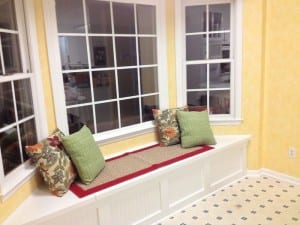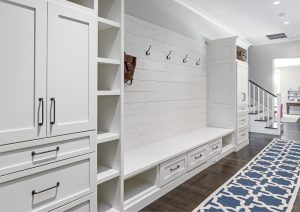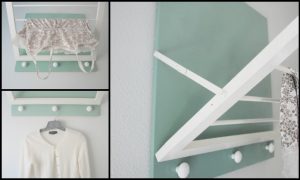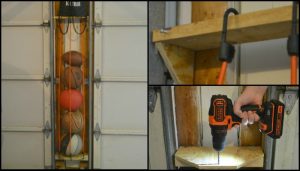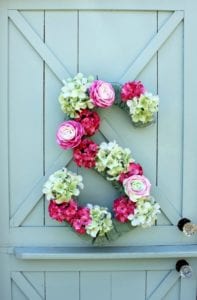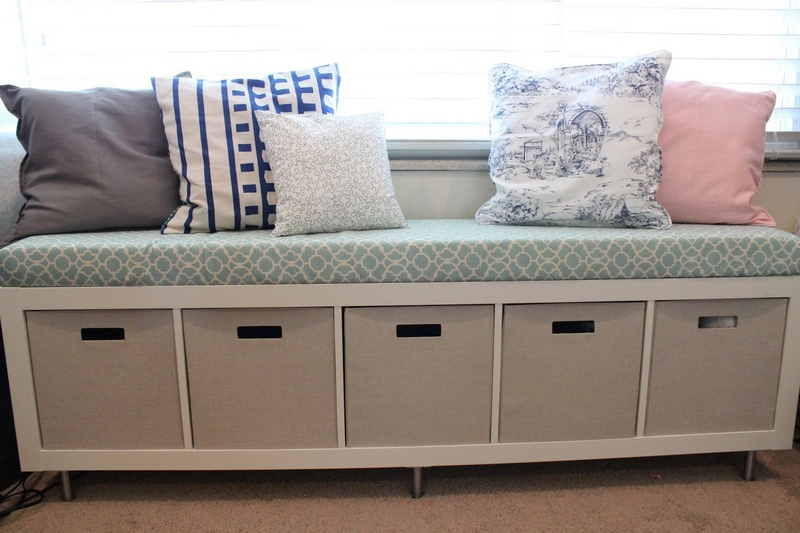
Are you looking for a storage bench that is both stylish and functional? Then look no further than a repurposed bookshelf! This easy DIY project will take less than an hour to complete, and it will provide you with a beautiful and sturdy storage bench that you can use in any room in your home.
The DIY storage bench you see above was built to serve as a window bench. It is made with Ikea’s Expedit bookshelf and stainless steel legs. The seat cushion is DIY too, using an inexpensive foam from a local store.

This storage bench is a quick and easy project that anyone can tackle. With just a few supplies and some simple assembly, you can have a stylish and functional bench in no time. Not a lot of measuring and wood cutting to do, and also no sewing involved. This bench is great for adding extra seating and storage to any room in your home.
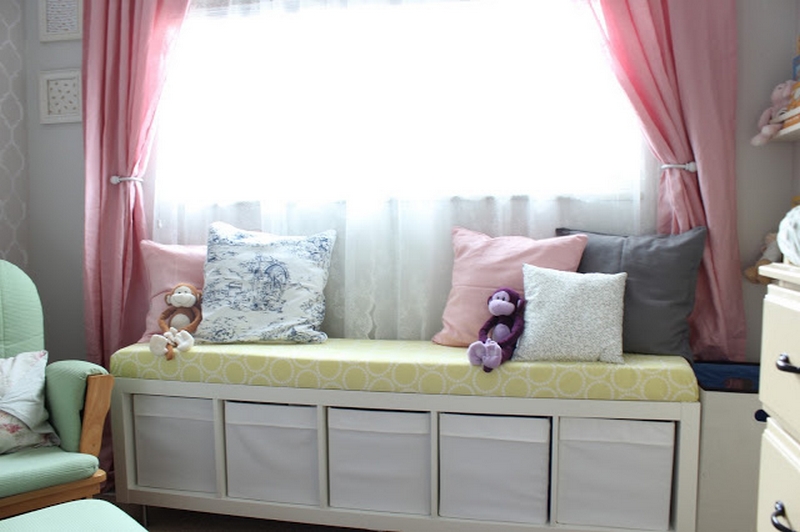
We love that this furniture piece is not built-in (which is another reason why this project is easy). You can always move the unit if you need to or relocate it to wherever you want. This makes it great for small spaces or apartments where you might have to move things around often.
We love how this clever window bench doubles as an entryway bench! It’s a great option for small spaces, and we love the added storage underneath.
Contents
Building a Storage Bench
Materials
- Shelving Unit
- 2 sets 4″ Capita Legs
- MDF Board
- Foam
- Quilt Batting
- Fabric of choice
- Primer
- Paint (colour of your choice)
- Storage Box that fits your shelving units
Tools
- Cordless Drill
- Marker
- Electric Kitchen Carving Knife
- Staple Gun
- Sander
Instructions
Before you start this project, you’ll need to gather all the materials needed for this transformation. Once you have all of your materials, you can begin by cleaning out your old bookshelves. If you’re not sure how to do this, ask a friend or family member for help.
Once your bookshelves are clean, you can begin sanding the old paint down. Be sure to sand evenly to create a smooth surface for painting. If you have any large areas of paint build-up, you may need to use a paint scraper to remove it. Once you have a smooth surface, you are ready to begin repainting!
Before you begin your painting project, be sure to apply a primer. This will help the paint to adhere properly and create a smooth finish. Without a primer, you may find that the paint chips or peels over time.
After the paint dries, you can then start attaching the legs. Make sure to use the right screws and drill bit size so the legs are properly secured. Also, take care not to over-tighten the screws, as this can damage the legs.
Cut the MDF board and the foam to fit the bench. When you’re done, cover the foam with quilt batting, securing it with staples. Then cover with a fabric of your choice, trimming any excess. Be sure to take precise measurements when cutting the MDF and foam, so that the final product fits snugly on the bench.
Also, take care when securing the quilt batting and fabric, so that there are no loose ends or wrinkles. With a little careful planning and execution, you’ll have a beautiful, custom-made bench cover that will last for years.
Finally, you can add storage boxes under the bench for storage units. Adding a storage box under the bench is a great way to increase the amount of storage space in your home. This is especially useful in small homes or apartments where space is limited. By using a storage box, you can easily store away items that you don’t need on a daily basis, freeing up more space in your home.
Safety Considerations and Tips for DIY Storage Bench
Creating a DIY storage bench from a repurposed bookshelf is not only a fantastic way to add functional beauty to your home but also an opportunity to engage in a rewarding project. However, ensuring safety during the process is paramount to prevent accidents and achieve the best results.
Below, we outline essential safety considerations and tips to keep in mind when building your storage bench.
Pre-Project Planning
- Understanding Your Tools: Familiarize yourself with each tool you plan to use. Read the manuals for your cordless drill, electric kitchen carving knife, sander, and staple gun to understand their operation and safety features.
- Workspace Preparation: Ensure your workspace is well-lit, ventilated, and free of clutter. A clean workspace minimizes the risk of tripping or accidentally knocking over tools.
During Construction
- Dress Appropriately: Wear protective clothing, including safety goggles, gloves, and sturdy shoes. Loose clothing should be avoided to prevent entanglement in tools.
- Measure and Mark Safely: When using the marker to measure and mark your shelving unit, MDF board, or fabric, make sure to do so on a stable surface. Double-check measurements to minimize mistakes that could require redoing work, leading to frustration and potential safety hazards.
- Cutting with Care: Use the electric kitchen carving knife to cut foam and the MDF board with precision. Always cut away from your body and keep your hands clear of the blade’s path. Secure the material firmly before cutting to prevent slips.
- Sanding and Painting: When using the sander, wear a dust mask to avoid inhaling particles. During the painting process, work in a well-ventilated area or outdoors to minimize exposure to fumes from paint and primer. Always allow paint to dry completely in a well-ventilated area before proceeding to the next step.
- Attaching Legs and Assembly: While attaching the 4″ Capita legs to your storage bench, ensure the shelving unit is stable and supported to prevent it from tipping over. Use the cordless drill carefully, selecting the correct drill bit and screw size to securely attach the legs without damaging the unit.
Post-Construction
- Securing the Storage Bench: If the storage bench will be used in a high-traffic area or around children, consider securing it to the wall to prevent tipping. This can be especially important for taller benches or those in homes with young children.
- Checking for Sharp Edges: After completing your storage bench, inspect it for any sharp edges or corners, particularly around the MDF board and where modifications were made. Sand any rough areas to create a smooth, safe finish.
Maintaining Your Bench: Regularly check the stability of the legs and the condition of the bench to ensure it remains safe to use. Tighten any loose screws and repair any damage promptly.
What do you think? Is this storage bench going to be your next DIY project?
Click on any image to start the lightbox display. Use your Esc key to close the lightbox.![]()


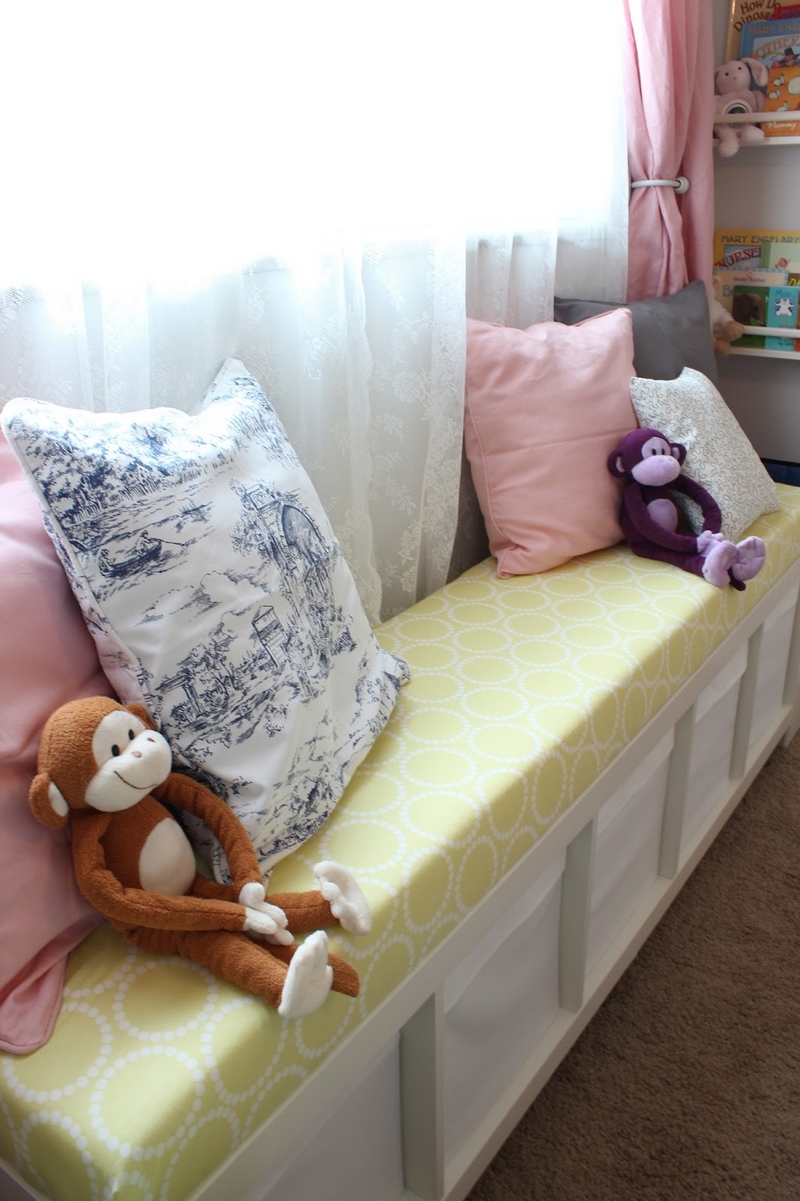
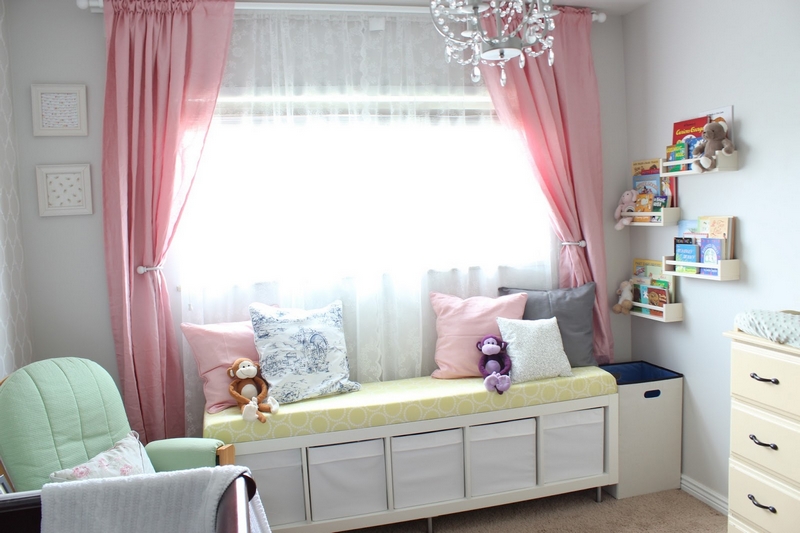
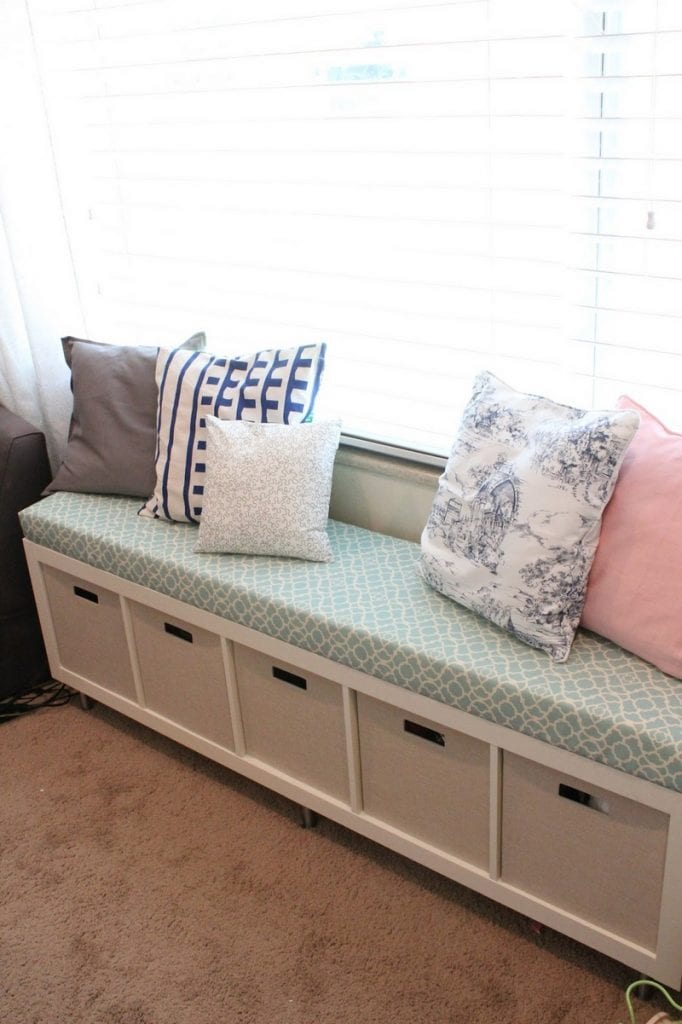
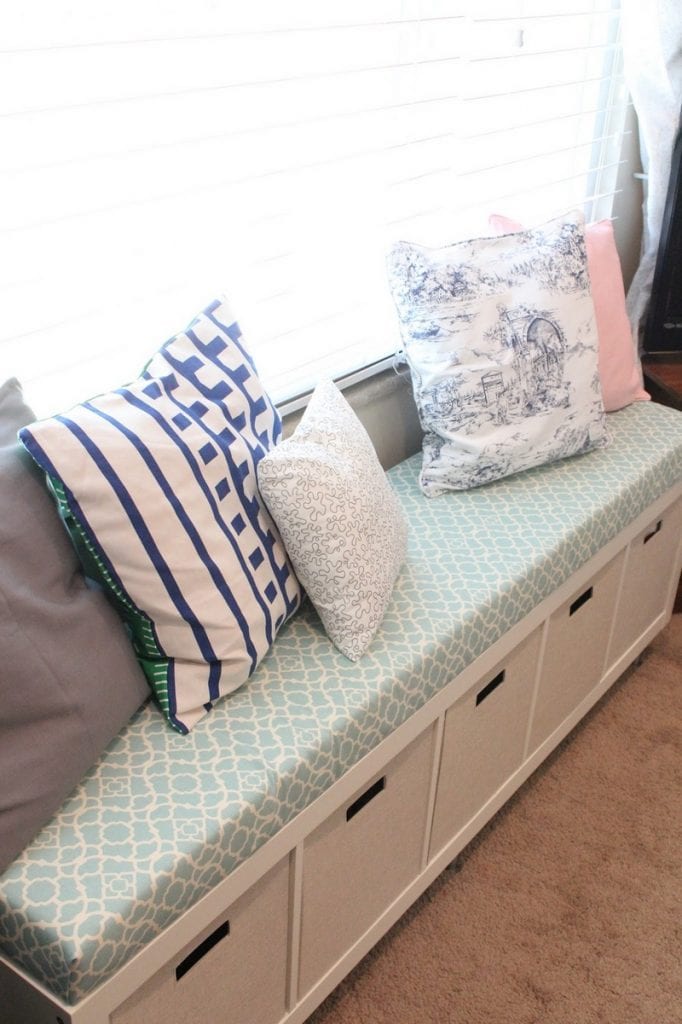
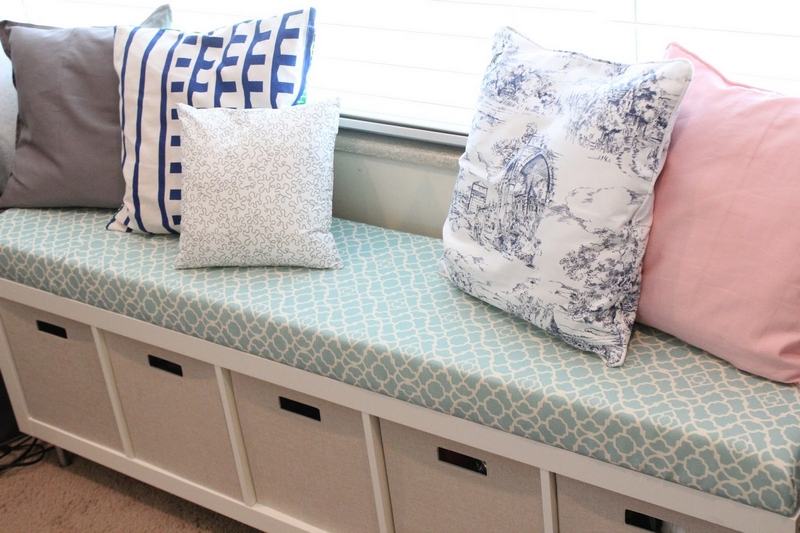
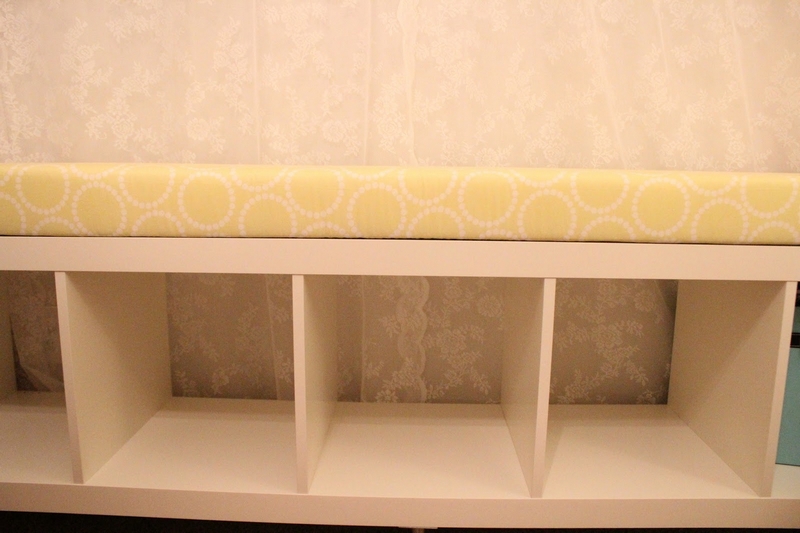
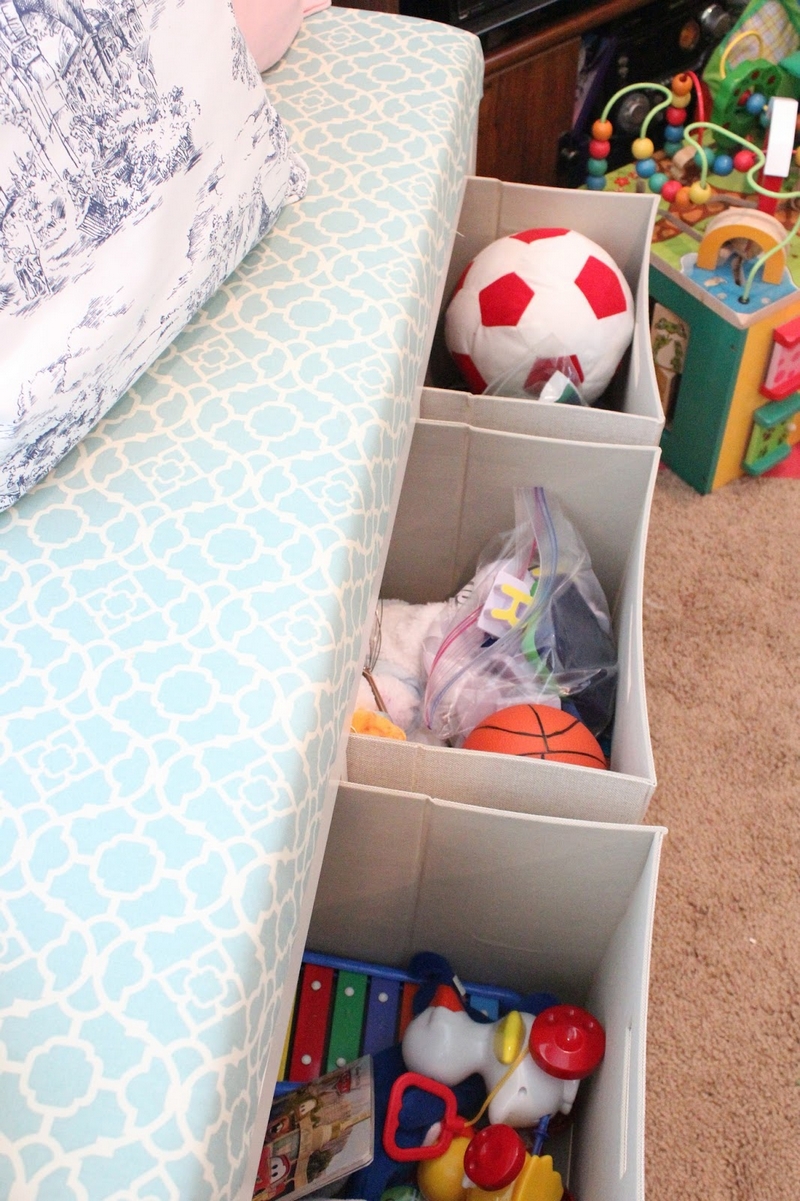
Maximizing Storage Space with Creative Solutions
Maximizing storage space within your home is both an art and a science, especially when working with multifunctional furniture like storage benches. These versatile pieces not only provide a cozy seating option but also serve as an ingenious storage solution. By employing creative strategies, you can enhance the utility of your storage bench, making it a pivotal element in organizing your living space efficiently.
Below are several innovative ideas to help you make the most of your storage bench.
Utilize Vertical Space
Leveraging vertical space within the storage bench is a key strategy for amplifying storage capacity. By opting for stackable storage boxes or bins, you can significantly increase the amount of items stored within the same footprint. This method is particularly effective in minimizing clutter and maximizing organization.
Clear containers offer the advantage of easily identifying contents at a glance, eliminating the need to rummage through each box. Alternatively, labeling each box with its contents can serve the same purpose, ensuring items are easily found and accessible. This approach is especially beneficial in shared spaces, where efficient use of space is crucial.
Implement Dividers
The installation of dividers within your storage bench can transform a single large storage space into several smaller compartments, tailored to organize various types of items. This customization enables a more organized and efficient use of space, making it simpler to store and retrieve items as needed.
For example, in an entryway bench, dividers can segregate space for shoes, keeping them neatly lined up and readily accessible, while another compartment might be dedicated to hats and scarves. The flexibility of materials for dividers, from sturdy MDF board to adaptable thick cardboard, allows for a range of durability and customization options to fit specific storage requirements and preferences.
Dual-Purpose Accessories
Elevating the functionality of your storage bench through dual-purpose accessories can significantly enhance its utility. Cushions or seating pads equipped with hidden storage compartments offer a clever solution to the common problem of clutter. Zippered compartments within cushions are perfect for tucking away small, frequently used items such as remote controls, magazines, or craft supplies.
This ingenious solution not only maximizes the utility of the storage bench but also maintains a tidy and organized appearance. Items are kept out of sight, contributing to a clutter-free environment, yet remain within easy reach, blending convenience with aesthetics.
Hidden Compartments
The inclusion of drawers beneath the seating area of your storage bench is a clever way to introduce additional storage space without detracting from the bench’s visual appeal. This design is particularly suited to storing items that are not frequently used, thereby minimizing clutter and maintaining a clean and orderly appearance in your living space. The drawers serve as a discreet storage solution, seamlessly blending into the bench’s design while offering ample space for items like seasonal decorations, extra linens, or seldom-used kitchenware.
When designing or selecting a storage bench with this feature, consider the drawer’s construction and slide mechanisms to ensure smooth operation and durability. Moreover, this hidden compartment reinforces the dual function of the storage bench, combining seating and storage in a manner that is both practical and aesthetically pleasing.
Go Mobile
Incorporating rolling baskets or crates underneath your storage bench introduces a dynamic and versatile storage solution that caters to the ever-changing needs of modern living. This approach is particularly beneficial in spaces that serve multiple purposes, such as children’s bedrooms, play areas, or multi-functional living rooms.
The mobility of these storage containers allows for easy access to toys, books, crafting supplies, or even shoes, making it simple to keep the area tidy and organized. Rolling baskets or crates can be customized to match the decor of the room, with options ranging from rustic wooden crates to sleek metal baskets, ensuring that they complement the overall design while remaining functional.
The ability to quickly move these containers out for access or cleaning, and then neatly tuck them back under the storage bench, maximizes floor space and maintains the aesthetic integrity of the room. This solution not only enhances the usability of the storage bench but also encourages a more organized and adaptable living environment.
Multipurpose Use
Elevating the utility of your storage bench to serve as a mini-library can significantly enhance its functionality. By dedicating a portion of the bench to store books and magazines, you create a dual-purpose solution that is both practical and aesthetically pleasing. This approach is particularly beneficial in living rooms or reading nooks, where the storage bench can provide comfortable seating while keeping your favorite reads within arm’s reach.
To implement this idea effectively, consider using separators or bookends within the storage compartments to organize the books and magazines neatly. This not only helps in maintaining an organized look but also makes it easier for you to find and retrieve reading material. Additionally, this setup encourages a habit of reading and keeps the living space clutter-free, as books and magazines are stored away neatly instead of being scattered around the house.
Seasonal Storage Strategy
Utilizing your storage bench for seasonal storage is a strategic approach to managing space efficiently. By allocating part of the bench to store items relevant to the current season, such as winter gear including gloves, scarves, and hats during colder months, or summer essentials like beach towels, sun hats, and swimwear during warmer periods, you can ensure that your home remains clutter-free and organized throughout the year.
This rotating system allows for the optimization of space within the storage bench, as only currently useful items occupy space, making it easier to manage and access what you need, when you need it. It also simplifies the transition between seasons, as swapping out items becomes a straightforward task that can significantly impact the functionality of your living space.
To maximize this strategy, consider using labeled bins or bags within the storage bench for each category of seasonal items, making the rotation process seamless and efficient. This method not only keeps your home organized but also prolongs the life of seasonal items by storing them properly when not in use.
With a bit of creativity and strategic planning, your storage bench can transform into a highly efficient storage solution, far beyond its initial purpose. By implementing these ideas, you can maximize the storage potential of your bench, contributing significantly to a tidier, more organized home.
Choosing the Right Materials for Your DIY Storage Bench
Creating a DIY storage bench is an enriching project that combines functionality with personal style. However, the success of this endeavor largely depends on choosing the right materials. These materials not only influence the appearance and durability of your storage bench but also its usability and comfort.
Below, we explore key considerations for selecting the perfect materials for your project, ensuring your storage bench meets both your aesthetic and practical needs.
Shelving Unit
Select a shelving unit that can withstand the weight of items you plan to store, as well as the weight of individuals who will sit on the bench. Materials such as solid wood or metal are ideal for their strength and longevity. Consider the shelving unit’s design as well; units with a back panel offer additional stability and can better conceal the contents for a neater appearance.
Legs
The legs, such as the 4″ Capita legs mentioned, not only elevate the bench to a comfortable seating height but also contribute to its overall style. Choose legs that complement the bench’s design and ensure they are capable of supporting the bench’s total weight, including the shelving unit, stored items, and seated individuals. Materials like stainless steel offer both durability and a modern aesthetic.
MDF Board
For the seating area, MDF board is a popular choice due to its smooth surface, which is ideal for painting, and its uniform density, which makes it easy to cut and shape. Ensure the MDF board is thick enough to support the weight without bending or breaking.
Foam and Quilt Batting
Selecting the right foam density is crucial for comfort and longevity. A higher-density foam will retain its shape and support over time. Pair it with quilt batting to soften edges and add an extra layer of comfort. This combination will make the storage bench inviting and comfortable for extended sitting periods.
Fabric
The fabric covers the foam and quilt batting, adding color, texture, and personality to the storage bench. Choose a fabric that not only matches your decor but is also durable and easy to clean. Consider materials like canvas, leather, or outdoor fabrics for their resilience and ease of maintenance.
Primer and Paint
A quality primer and paint not only enhance the appearance of your storage bench but also protect it from wear, tear, and moisture. Select a paint suitable for the material of your shelving unit and consider a semi-gloss or gloss finish for easy cleaning.
Storage Boxes
Choose storage boxes that fit neatly within the shelving unit’s compartments. Materials such as fabric bins, wicker baskets, or clear plastic containers can offer both functionality and style. Ensure these storage solutions complement the overall design of your storage bench while providing easy access to stored items.
Selecting the right materials for your DIY storage bench requires careful consideration of both functional and aesthetic factors. By choosing durable, comfortable, and stylish materials, you can ensure your storage bench not only serves its practical purpose but also enhances the beauty and organization of your home.
Conclusion
Building a DIY storage bench combines creativity with utility, offering a personalized piece that enhances home organization and aesthetics. This project provides ample storage space while also serving as a comfortable seating option, making it a versatile addition to any room. The process of creating a storage bench encourages resourcefulness and delivers a sense of accomplishment, alongside the tangible benefits of increased storage and improved home functionality.

